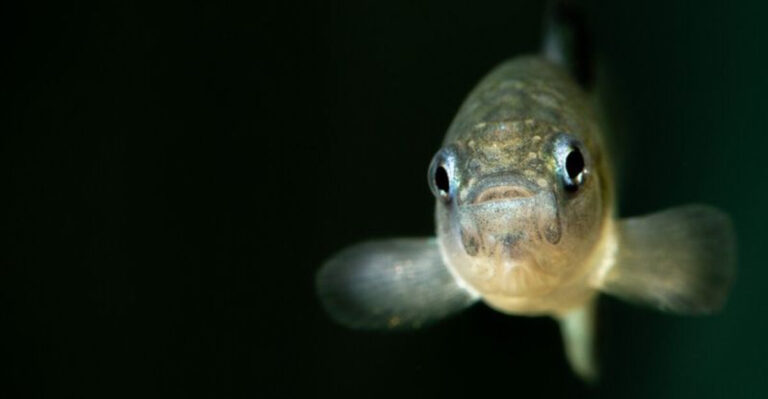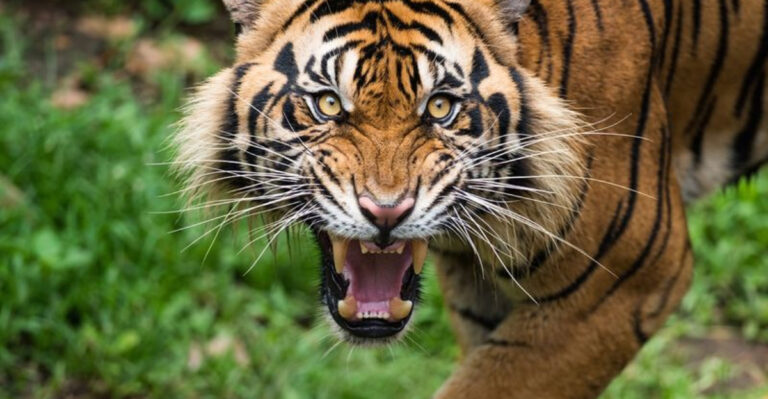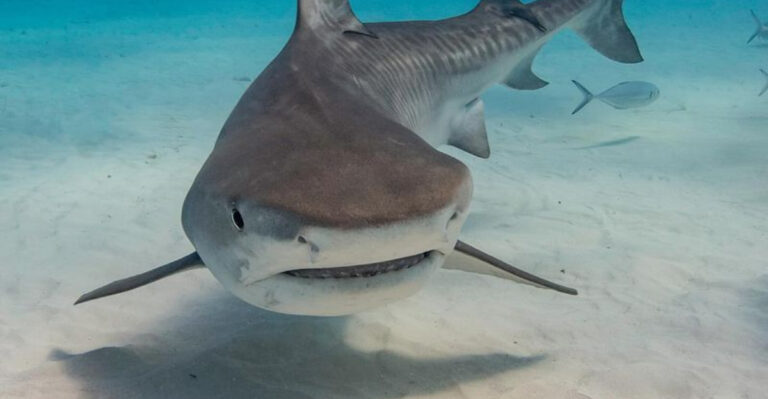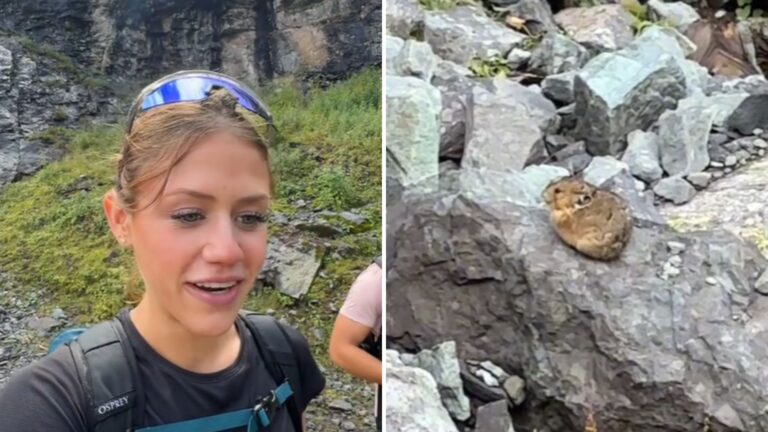15 Forgotten Sea Creatures That Played A Huge Role In Ocean History
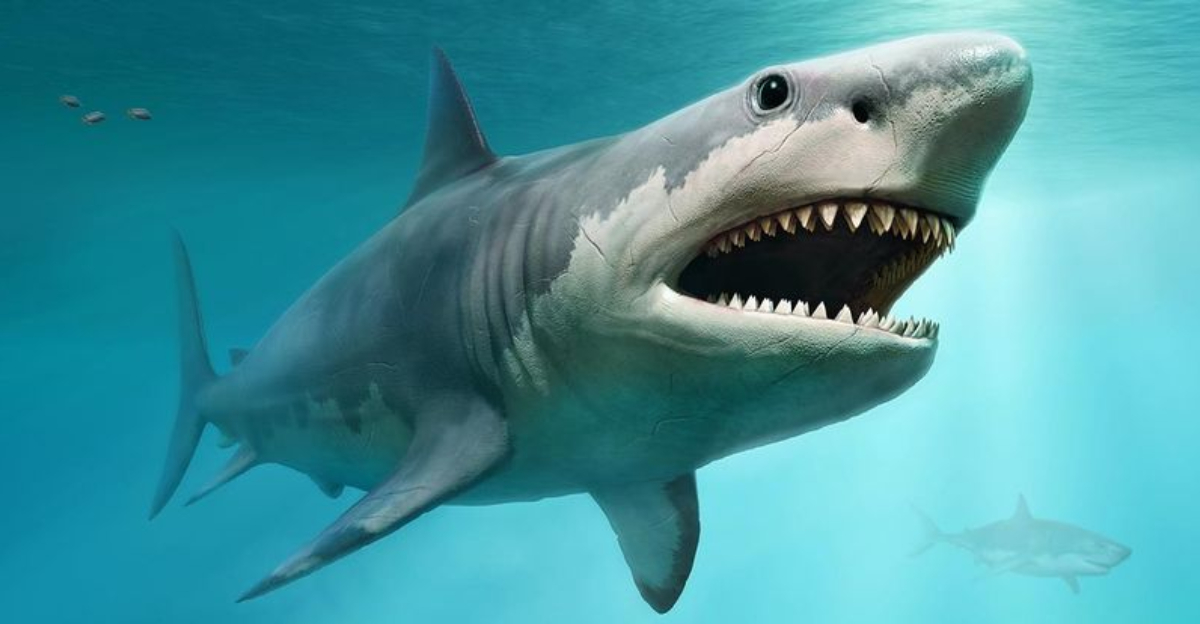
The oceans hold secrets of creatures long gone but never forgotten by science. These remarkable marine animals shaped our seas, influenced evolution, and left clues about Earth’s past that scientists still study today.
From terrifying predators to bizarre invertebrates, these forgotten sea dwellers were the architects of ocean ecosystems millions of years before humans existed.
1. Anomalocaris
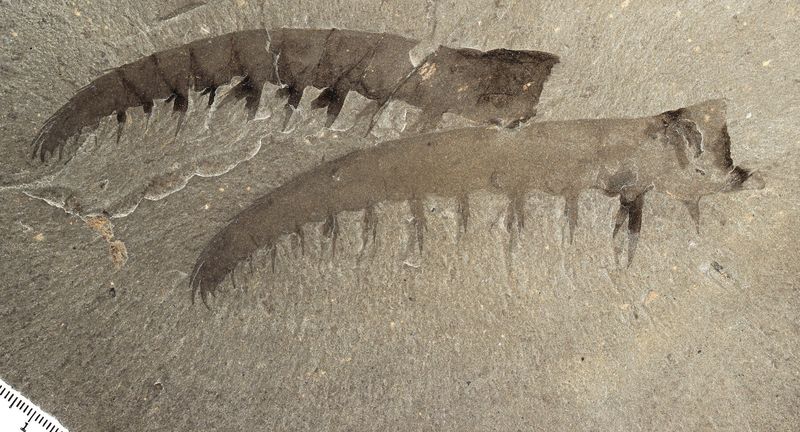
Swimming through ancient oceans 500 million years ago, Anomalocaris ruled as the first great ocean predator. With circular jaws and flexible swimming lobes, this meter-long hunter chased primitive fish and shellfish across Cambrian seas.
Scientists once thought its parts belonged to different animals entirely! Its discovery revolutionized our understanding of early animal evolution and showed that complex predators evolved much earlier than previously believed.
2. Dunkleosteus
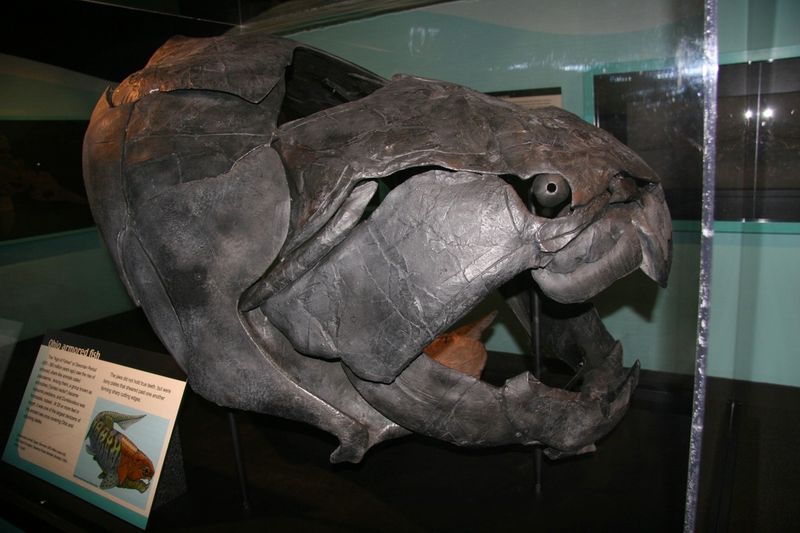
Imagine a fish with a bone-crushing bite stronger than a T-Rex! Dunkleosteus terrorized Devonian seas 380 million years ago, growing up to 33 feet long with armor-plated head shields instead of teeth. This prehistoric monster could snap its jaw shut with remarkable force.
Fossils show its bony plates developed self-sharpening edges that sliced through prey like scissors, making it one of history’s most efficient hunters before sharks took over.
3. Hallucigenia

For decades, scientists couldn’t figure out which end was which on this tiny creature! Hallucigenia stumped researchers with its row of spikes, tentacle-like appendages, and seemingly impossible body structure.
Originally discovered in the Burgess Shale, paleontologists first reconstructed it upside down and backward. This thumb-sized oddity from 505 million years ago forced scientists to reconsider how early animals evolved and revealed an unexpected ancestor of modern velvet worms.
4. Trilobites
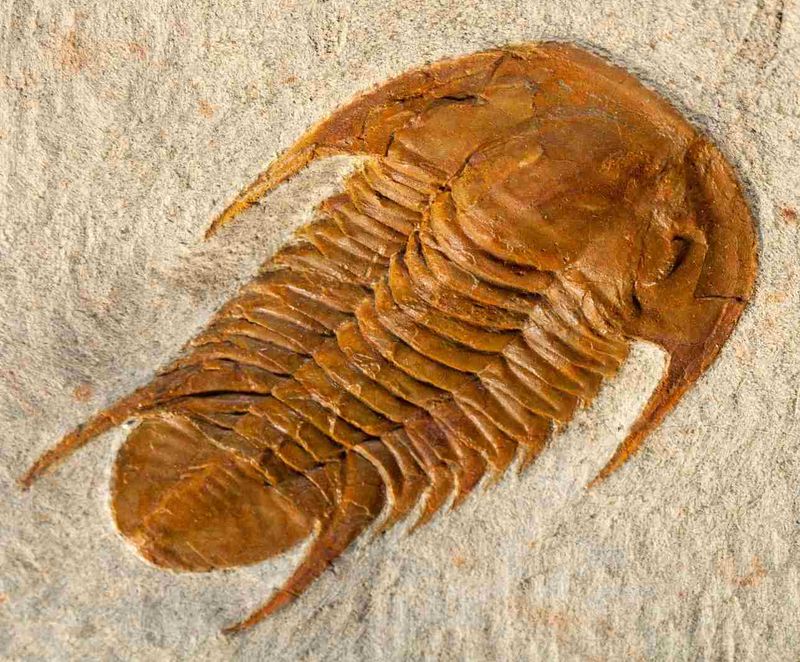
Masters of survival for over 270 million years, trilobites conquered every ocean habitat from shallow tropical lagoons to the darkest deep-sea trenches. Their compound eyes—some of the first complex visual systems on Earth—gave them extraordinary vision.
These resilient creatures survived multiple mass extinctions before finally disappearing. Their abundant fossils help geologists date rock layers worldwide, making them the pocket watches of paleontology and crucial timeline markers for understanding Earth’s history.
5. Ammonites
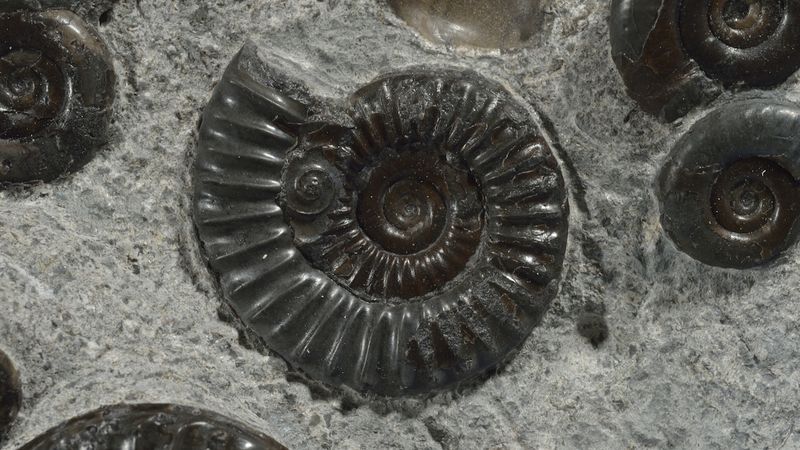
Those spiral shells you find on beaches might remind you of ammonites, but they’re just distant cousins. True ammonites ruled ancient seas with sophisticated eyes, grabbing tentacles, and the ability to control their buoyancy like modern submarines.
Their shells grew increasingly complex over millions of years, developing intricate patterns that helped them withstand crushing ocean pressures. When ammonites disappeared alongside dinosaurs, they left behind millions of fossils that geologists use as living calendars to date rock formations.
6. Pterygotus

Not all scorpions lived on land! Pterygotus, a sea scorpion reaching lengths of 8 feet, patrolled ancient oceans with massive claws and compound eyes that could spot the slightest movement.
Unlike modern scorpions, these giants lacked a venomous stinger. Instead, they used paddle-like limbs to swim swiftly after prey.
Their fossilized remains reveal how arthropods once grew to enormous sizes in oxygen-rich prehistoric seas, challenging our understanding of how big invertebrates can evolve.
7. Megalodon
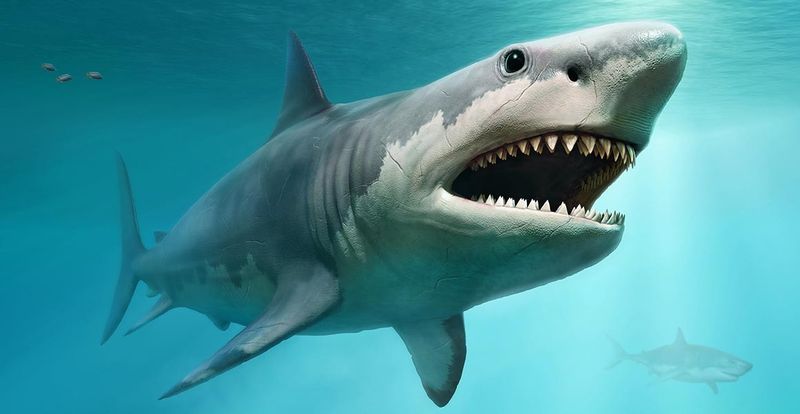
Forget what you’ve seen in movies—the real Megalodon was even more impressive! Growing up to 60 feet long with teeth the size of your hand, this super-shark hunted whales across ancient oceans for 20 million years. Scientists study its fossilized vertebrae and teeth to understand how it hunted.
Megalodon’s disappearance around 3.6 million years ago created a massive ecological gap, allowing modern whale populations to flourish. Its legacy lives on in coastal legends worldwide about giant sea monsters.
8. Crinoids (Sea Lilies)
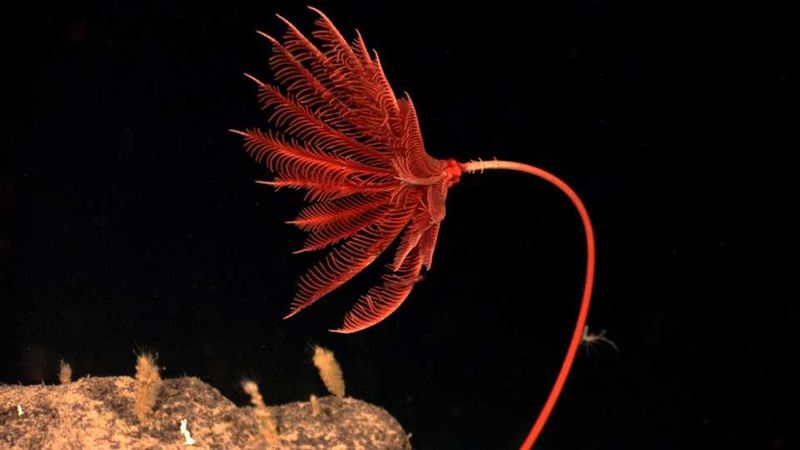
Looking more like plants than animals, ancient crinoids created vast underwater gardens that stretched for miles across prehistoric seafloors. These flower-like creatures are actually animals related to starfish, with feathery arms that catch passing food particles.
During the Paleozoic Era, their skeletal remains formed entire limestone beds that we mine today. Though largely forgotten, some crinoids still exist in deep oceans, living fossils that remind us how ancient some of our ocean’s residents truly are.
9. Nautiloids

Before dinosaurs walked the Earth, nautiloids ruled the seas as the top predators for over 270 million years. With shells reaching 30 feet long, these straight-shelled relatives of modern squid used jet propulsion to chase prey through ancient oceans.
Only the modern nautilus remains from this once-dominant group. Their fossilized shells reveal sophisticated buoyancy control systems that inspired early submarine designs. Nautiloids pioneered the chambered shell technology that later evolved into the spiral shells of ammonites.
10. Tylosaurus
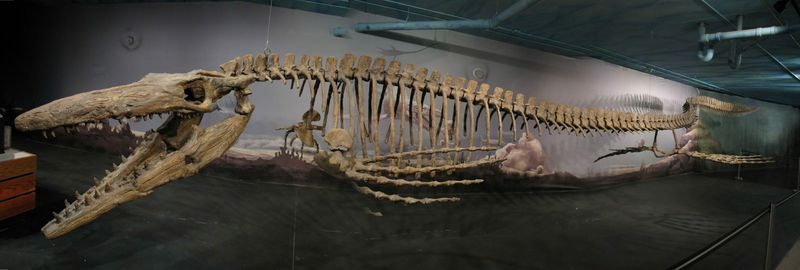
The T-rex of the seas, Tylosaurus reached lengths of 50 feet and had double-hinged jaws that could swallow huge prey whole. This marine lizard wasn’t actually a dinosaur but a mosasaur that dominated Late Cretaceous oceans worldwide.
Fossil evidence shows Tylosaurus ate everything from fish and ammonites to seabirds and even other marine reptiles. Its streamlined body and powerful tail made it an incredibly fast swimmer. The discovery of Tylosaurus fossils in Kansas revealed that much of North America was once covered by a vast inland sea.
11. Opabinia
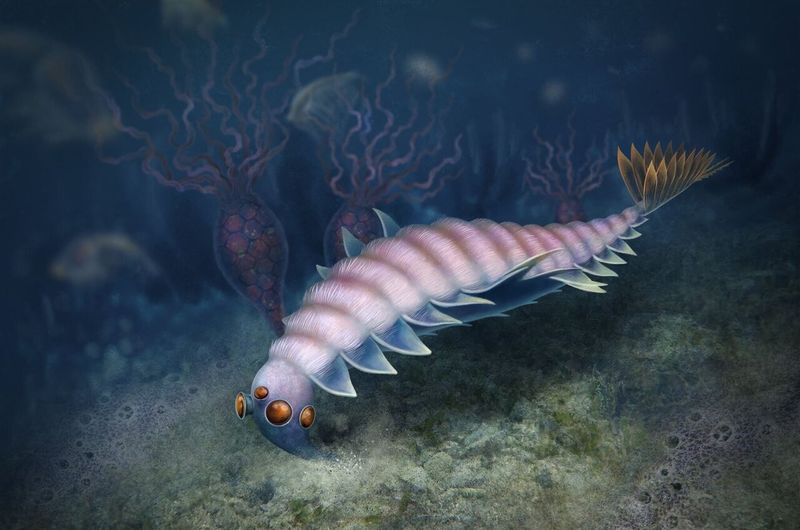
When paleontologist Stephen Jay Gould first presented Opabinia to colleagues in the 1970s, they laughed because it looked so bizarre. This five-eyed creature with a front-facing nozzle seemed too strange to be real!
Found in the famous Burgess Shale, this 7-centimeter oddity used its flexible frontal appendage to capture prey and pass it to its mouth. Opabinia forced scientists to reconsider how early animal body plans evolved, showing that evolution experimented with truly alien designs during the Cambrian Explosion.
12. Ichthyosaurs
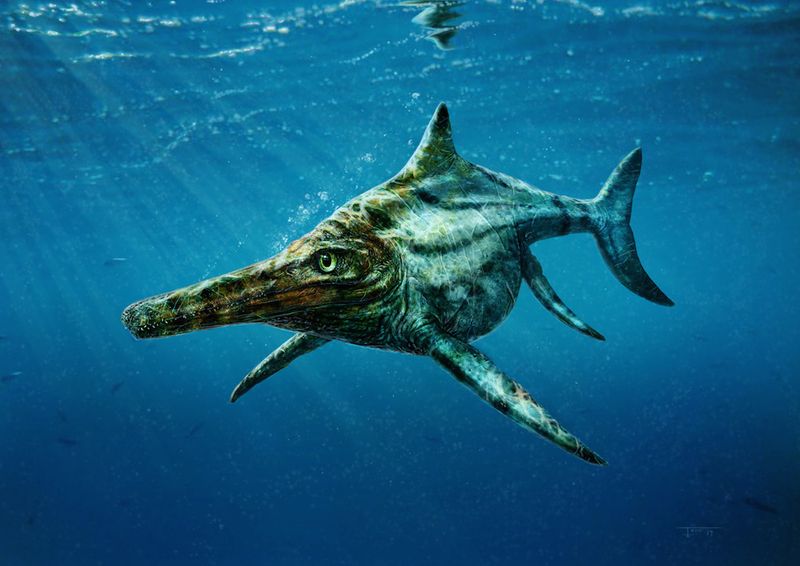
When Mary Anning discovered the first complete ichthyosaur skeleton in 1811, people thought she’d found a sea monster! These dolphin-shaped reptiles evolved from land animals that returned to the ocean, developing fins and streamlined bodies convergently similar to modern dolphins.
Fossilized ichthyosaur stomachs reveal they hunted squid and fish using large eyes adapted for deep diving. Some species even gave birth to live young in the water rather than laying eggs, as proven by remarkable fossils showing babies being born.
13. Planktic Foraminifera
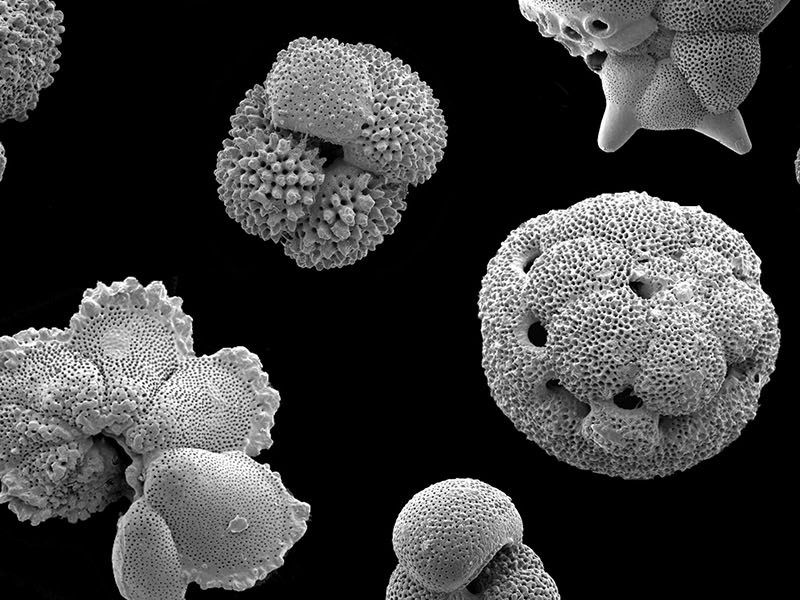
Too small to see with the naked eye but powerful enough to build mountains! These microscopic organisms with intricate shells floated through ancient oceans by the trillions, forming the foundation of marine food webs for over 500 million years.
When they died, their calcium carbonate shells sank to the seafloor, creating massive chalk deposits like the White Cliffs of Dover. Scientists study these tiny shells to track ancient climate changes, as their chemistry records ocean temperatures and carbon dioxide levels from millions of years ago.
14. Basilosaurus
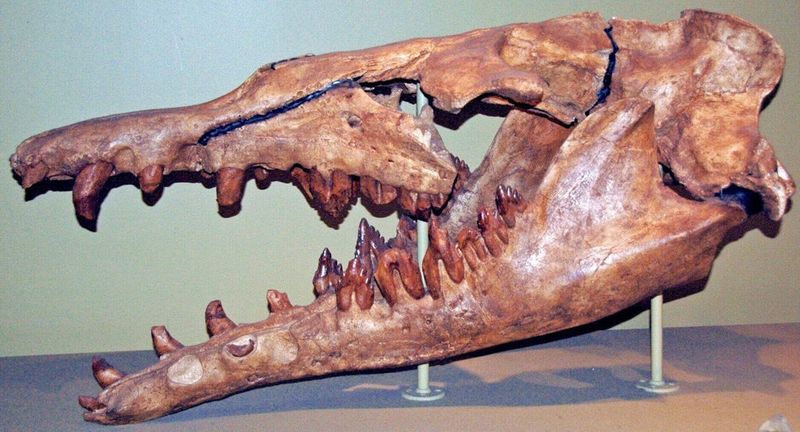
Originally mistaken for a sea serpent or reptile (hence the name meaning ‘king lizard’), Basilosaurus was actually one of the first fully aquatic whales. Its 60-foot snake-like body still contained tiny vestigial hind limbs—evidence of its land-dwelling ancestors. Fossil discoveries in Egypt’s Valley of the Whales show how these creatures dominated Eocene seas 40 million years ago. Basilosaurus represents a crucial missing link in whale evolution, showing how land mammals gradually adapted to life in the oceans and eventually lost their rear limbs entirely.
15. Helicoprion
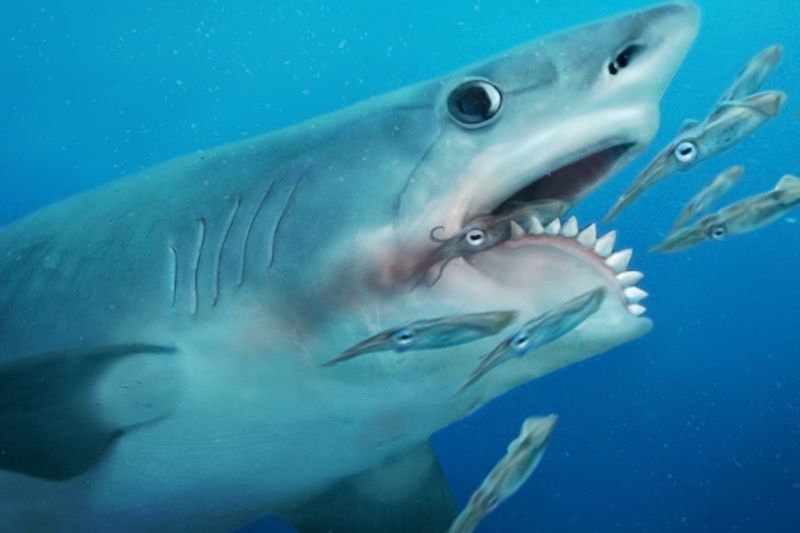
Imagine a shark with a circular buzzsaw in its lower jaw! Helicoprion puzzled scientists for over a century after its bizarre spiral tooth whorl was discovered in 1899. Researchers couldn’t figure out where this spiral of teeth belonged on the animal.
Modern analysis reveals Helicoprion used its tooth whorl like a conveyor belt to slice through ancient squid. As new teeth grew, older ones rotated inward rather than falling out. This 270-million-year-old fish reminds us that evolution sometimes creates solutions so strange we can barely comprehend them.

